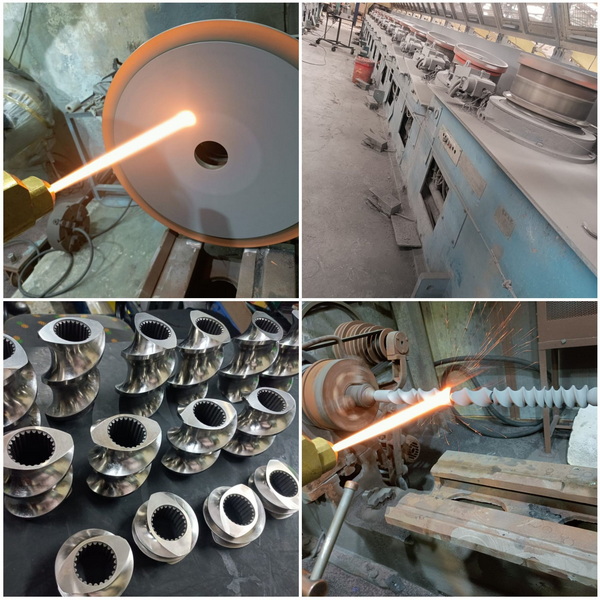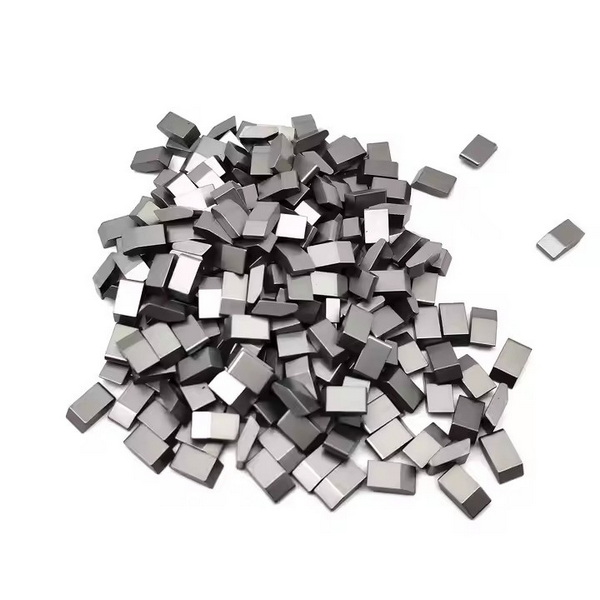Content Menu
● Introduction to Tungsten Carbide Coating
● The Science Behind Tungsten Carbide
● Key Properties of Tungsten Carbide Coatings
● Application Methods
>> High-Velocity Oxygen Fuel (HVOF)
>> Plasma Spraying
>> Chemical Vapor Deposition (CVD)
>> Detonation Gun (D-Gun) and Physical Vapor Deposition (PVD)
● Types of Tungsten Carbide Coatings
● Industrial Applications
>> Aerospace and Aviation
>> Oil and Gas
>> Manufacturing and Metalworking
>> Power Generation
>> Automotive and Transportation
>> Additional Sectors
● Advantages and Limitations
>> Advantages
>> Limitations
● Maintenance and Longevity
● Conclusion
● FAQ
>> 1. What are the main benefits of tungsten carbide coating?
>> 2. How is tungsten carbide coating applied?
>> 3. Which industries benefit most from tungsten carbide coatings?
>> 4. Can tungsten carbide coatings be customized?
>> 5. What maintenance is required for tungsten carbide-coated components?
Tungsten carbide coating is a specialized protective layer applied to components and tools to dramatically enhance their resistance to wear, abrasion, and corrosion. This advanced coating technology has become indispensable across industries that demand durability, precision, and extended service life from their equipment. In this comprehensive guide, we will explore the science behind tungsten carbide coatings, their properties, application methods, industry uses, benefits, limitations, and maintenance. Additionally, we will address frequently asked questions to provide a deeper understanding of this remarkable material.

Introduction to Tungsten Carbide Coating
Tungsten carbide coating refers to the process of depositing a layer of tungsten carbide-a compound of tungsten and carbon-onto the surface of a component or tool. This layer acts as a shield, protecting the substrate from harsh operating conditions, including abrasive wear, high temperatures, and corrosive environments. The result is a surface that is significantly harder and more durable than the underlying material, providing a cost-effective way to extend the life and performance of expensive machinery and tools.
The Science Behind Tungsten Carbide
Tungsten carbide is a ceramic-metal composite (cermet) formed by combining tungsten and carbon atoms in a precise ratio, typically with a metallic binder such as cobalt or nickel. This combination results in a material that boasts exceptional hardness, high density, and impressive thermal stability. The hexagonal crystal structure of tungsten carbide is responsible for its remarkable mechanical properties.
Key Scientific Attributes:
- Hardness: Among the hardest materials used in industry, only surpassed by diamond.
- Thermal Resistance: Maintains structural integrity and performance at extremely high temperatures.
- Chemical Stability: Resistant to most acids and bases, ensuring longevity in chemically aggressive environments.
Key Properties of Tungsten Carbide Coatings
Tungsten carbide coatings are engineered to deliver a unique set of properties that make them ideal for demanding applications:
- Extreme Hardness: Provides outstanding resistance to abrasion and wear.
- High Bond Strength: Ensures strong adhesion to the substrate, minimizing the risk of delamination.
- Low Porosity: Creates a dense, impenetrable barrier against moisture and corrosive substances.
- Thermal Conductivity: Efficiently dissipates heat, preventing thermal damage to components.
- Corrosion Resistance: Protects against chemical attack, especially when combined with suitable binders.
- Smooth Finish: Can be polished to achieve low surface roughness, reducing friction and improving efficiency.
Application Methods
There are several advanced techniques for applying tungsten carbide coatings, each offering distinct advantages depending on the application:
High-Velocity Oxygen Fuel (HVOF)
HVOF is the most widely used method for applying tungsten carbide coatings. In this process, tungsten carbide powder is propelled at supersonic speeds towards the substrate using a high-temperature, high-velocity gas stream. The result is a coating with exceptional density, low porosity, and high bond strength.
Plasma Spraying
Plasma spraying uses a high-temperature plasma arc to melt tungsten carbide powder, which is then sprayed onto the substrate. This method is suitable for achieving thicker coatings and can be tailored for specific surface textures.
Chemical Vapor Deposition (CVD)
CVD involves the chemical reaction of vapor-phase precursors to deposit a thin, uniform layer of tungsten carbide onto the substrate. This method excels at coating complex geometries and internal surfaces.
Detonation Gun (D-Gun) and Physical Vapor Deposition (PVD)
These specialized methods are used for specific applications requiring unique coating characteristics, such as ultra-fine grain structures or coatings on temperature-sensitive substrates.
Types of Tungsten Carbide Coatings
Tungsten carbide coatings can be customized by varying the composition and binder content to suit specific needs:
| Coating Type | Hardness (Rc) | Binder | Key Properties | Typical Uses |
| Tungsten Carbide/Cobalt | 60–65 | Cobalt | Wear resistance, abrasion | Valves, impellers, screws |
| Tungsten Carbide/Nickel-Chrome | 53–58 | Nickel-Chrome | Abrasion, particle erosion | Exhaust fans, cylinder liners |
| Tungsten Carbide/Cobalt/Chromium | 60–70 | Cobalt/Chromium | Corrosion, abrasion, fretting | Hydraulic cylinders, pump components |
| Chrome Carbide/Nickel-Chrome | 60–67 | Nickel-Chrome | High-temp wear, fretting | Turbine components, forging tools |
Industrial Applications
Tungsten carbide coatings are used in a wide range of industries due to their versatility and robust performance:
Aerospace and Aviation
- Turbine blades
- Compressor seals
- Landing gear components
Oil and Gas
- Drill bits
- Valve stems
- Pump parts
Manufacturing and Metalworking
- Cutting tools
- Dies and molds
- Extruders and mixers
Power Generation
- Steam and gas turbine components
- Erosion-resistant surfaces
Automotive and Transportation
- Engine parts
- Brake components
- Wear surfaces in railway manufacturing
Additional Sectors
- Paper and print industry (rollers, guides)
- Textile industry (needles, weaving tools)
- Mining and heavy machinery (crusher parts, conveyor screws)

Advantages and Limitations
Advantages
- Extended Component Life: Significantly reduces wear and tear, extending the lifespan of critical parts.
- Cost-Effective: Reduces the need for frequent replacements, resulting in long-term savings.
- Performance Enhancement: Maintains precise tolerances and efficiency in high-speed or abrasive environments.
- Environmental Benefits: Less waste and lower environmental impact compared to frequent part replacement.
- Versatility: Can be tailored for specific applications by adjusting composition and thickness.
Limitations
- Higher Initial Cost: More expensive than traditional coatings, though offset by reduced maintenance and downtime.
- Limited Ductility: The coating is extremely hard but can be brittle if not properly engineered.
- Specialized Application: Requires skilled technicians and advanced equipment.
- Oxidation Risk: Performance may degrade above 600°C in oxygen-rich environments.
- Weight: High density may not be suitable for all lightweight applications.
Maintenance and Longevity
Proper maintenance is essential to maximize the benefits of tungsten carbide coatings:
- Routine Inspections: Regularly check for signs of wear or damage to catch issues early.
- Surface Cleaning: Keep coated surfaces free from debris and contaminants.
- Professional Repairs: Address any coating damage with professional recoating or repair services.
- Environment Monitoring: Ensure the operating environment matches the coating specification for optimal performance.
Conclusion
Tungsten carbide coating represents a pinnacle of modern surface engineering, offering unmatched protection, durability, and performance for industrial components. Its exceptional hardness, wear resistance, and adaptability make it an indispensable solution across aerospace, oil and gas, manufacturing, power generation, and beyond. While the initial investment may be higher, the long-term benefits-extended service life, reduced downtime, and improved efficiency-make tungsten carbide coatings a wise choice for any operation where reliability and longevity are paramount.

FAQ
1. What are the main benefits of tungsten carbide coating?
Tungsten carbide coatings provide extreme hardness, excellent wear and abrasion resistance, high bond strength, and low porosity. These properties significantly extend the lifespan of coated components, reduce maintenance costs, and improve operational efficiency in demanding environments.
2. How is tungsten carbide coating applied?
The most common methods are High-Velocity Oxygen Fuel (HVOF), plasma spraying, and Chemical Vapor Deposition (CVD). Each technique offers unique advantages in terms of coating density, adhesion, and suitability for complex shapes or internal surfaces.
3. Which industries benefit most from tungsten carbide coatings?
Industries such as aerospace, oil and gas, manufacturing, power generation, automotive, and mining rely heavily on tungsten carbide coatings to protect critical components from wear, corrosion, and extreme temperatures.
4. Can tungsten carbide coatings be customized?
Yes, the composition and thickness of tungsten carbide coatings can be tailored by adjusting the binder content and particle size. This allows for optimization of hardness, toughness, corrosion resistance, and other properties to meet specific application requirements.
5. What maintenance is required for tungsten carbide-coated components?
Routine inspections, regular cleaning, and prompt professional repairs are essential to maintain the integrity and performance of tungsten carbide coatings. Monitoring the operating environment and following manufacturer guidelines will help maximize coating longevity.
















